Movie Review – Shape of Water, The
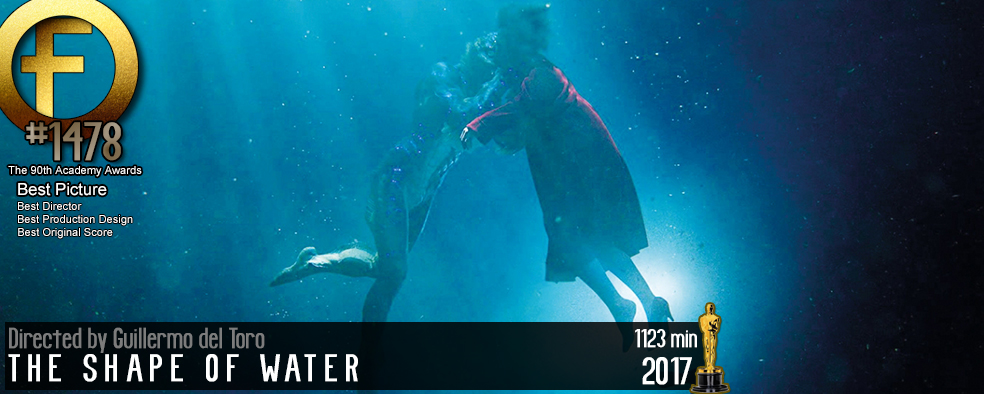
Principal Cast : Sally Hawkins, Michael Shannon, Richard Jenkins, Octavia Spencer, Doug Jones, Michael Stuhlbarg, Lauren Lee Smith, Nick Searcy, David Hewlett.
Synopsis: At a top secret research facility in the 1960s, a lonely janitor forms a unique relationship with an amphibious creature that is being held in captivity.
*****
Visual genius Guillermo del Toro delivers one of his best films to-date – if not the best film he’s ever made – in The Shape Of Water, a beautifully crafted romantic drama between a woman and a creature. As bizarre as that might sound, the film is quite lovely, beatific in its period depiction and captivating in its dramatic impetus as Paddington co-star Sally Hawkins saddles up next to del Toro’s most aquatic leading man so far, Doug Jones’ prosthetic and digitally enhanced enigmatic creature from the depths. Exquisitely filmed and acted, The Shape Of Water is a profoundly eccentric and delicious piece of cinematic candy, and one I hope to rewatch many times in the future.
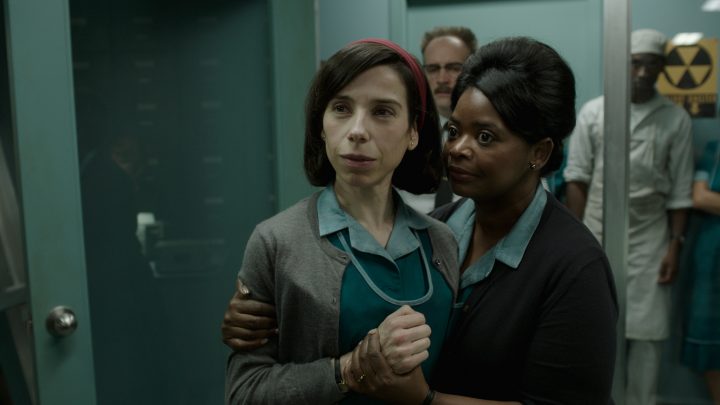
Elisa Esposito (Hawkins) is a mute government employee working as a cleaner in a Baltimore research facility alongside colleague Zelda (Octavia Spencer) at the height of the Red Scare. Facility director, Colonel Strickland (Michael Shannon) takes custody of a mysterious aquatic creature for study by Doctor Hoffstetler (Michael Stuhlbarh), a covert Russian operative unbeknown to all, a creature with whom Elisa forms a bond – and eventually an infatuation with – leading her to kidnap him to release him back into the ocean. Elisa is aided by both Zelda and her roommate Giles, a failed advertising artist, who sees in Elisa a paternal affection due to her affliction.
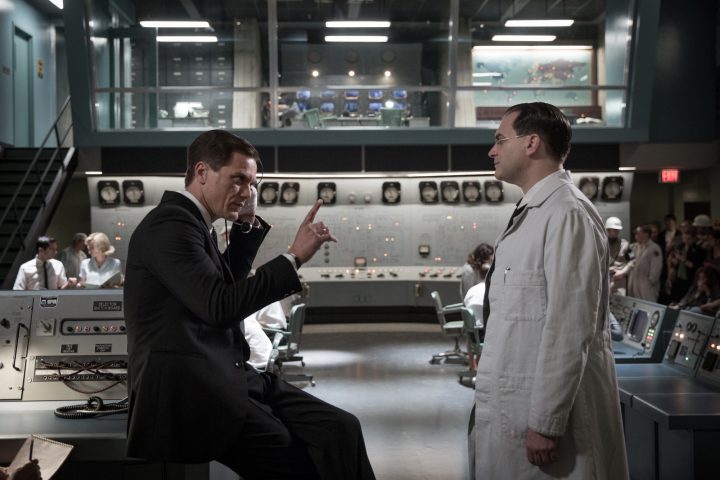
The Shape Of Water is part fairytale, part romantic drama, part science fiction, and altogether one of the most wondrous films of recent years. It’s the Forrest Gump of 2017, a film that transports us to a fantastical world of make-believe amid harsh reality (the threat of Communist action within America’s conspiracy-ready public elevates this period piece considerably, especially prescient considering where America is politically at this point in its history) and delivers a heartwarming, occasionally thrilling, always memorable adventure into the sublime. Co-written by del Toro and Vanessa Taylor (Divergent, as well as the upcoming live-action remake of Aladdin), the film’s elemental underpinnings of acceptance, rejection, of love and mistrust, are handled with the kind of visual strength only a master director can employ, and The Shape Of Water is almost a perfect film.
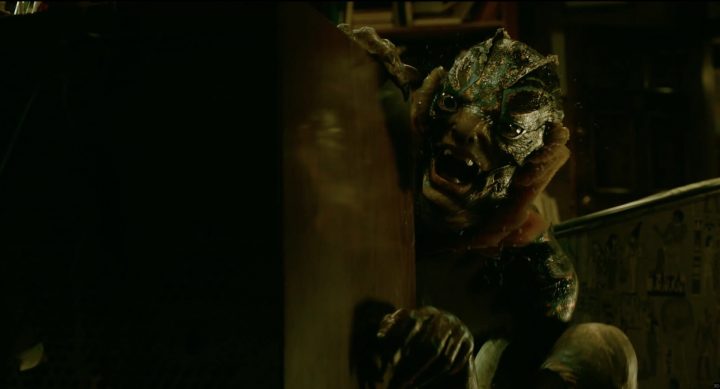
The premise is utterly bizarre – I can only imagine the pitch meeting with studio heads – and if you’d never seen this film you’d probably laugh your head off thinking it’s too ridiculous for words. Yet even in its most bizarre moments, The Shape of Water has some splendidly charming work here, sprinkled with one of the most odious screen villains this year, Michael Shannon’s contemptuous Strickland rampaging across the screen in one of the film’s best performances (yes, the villain of the film is probably the best part to watch). Elisa’s relationship with the Amphibian Man forms the centerpiece of the film, and del Toro manages to make the interspecies impracticality of a physical union work beyond what our imaginations can concoct, even though the creature’s backstory or physiognomy is never fully explained.
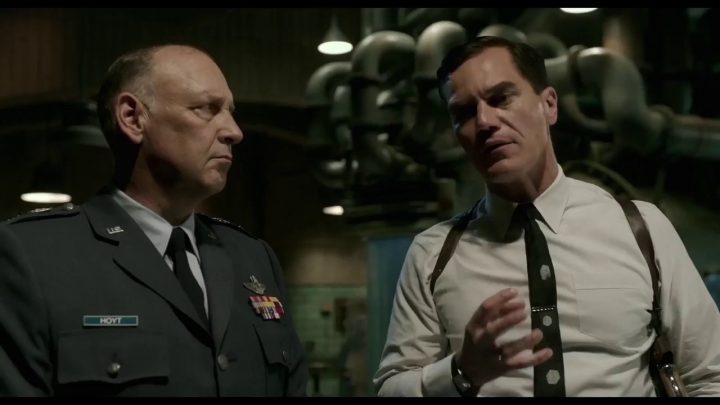
To a point, The Shape Of Water contains enormous similarities with Spielberg’s ET: The Extraterrestrial. A creature unknown to mankind, tracked by the government, saved by an innocent human, set to be released back into its native element (in this case water instead of outer space), all with the awestruck wonder of new discovery a director of del Toro’s capacity can deliver. This film’s Elliot, Sally Hawkins’ Elisa, is rendered as mute but with a heart to compensate, empathy being her strongest aspect. Elisa’s life exists around her small group of friends, notably Octavia Williams’ sharp-tongued Zelda, a woman for whom apparently no obstacle to aiding Elisa is too great despite her protestations to the contrary, and Giles, a terrific Richard Jenkins in magnificent stammering form. Through these two her saving of the creature exacerbates the antagonism of Strickland, who suspects (but cannot prove) the “asset” is in her care. The heist of the creature from the research facility is depicted as relatively easy (I suspect it wouldn’t be in real life) but this is a fantasy so who cares. Much like ET, the central creature’s ability to survive in our world is limited, here by a lack of water, and it’s through this fragility that del Toro works his magic in bringing it and Elisa together. Elisa’s sign language forms a common bond between them, with the creature speaking in gutteral honkings and Elisa herself speechless.
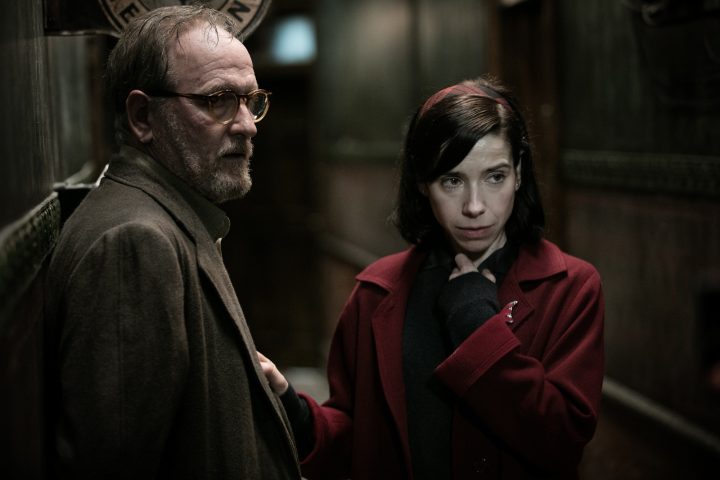
Fans of del Toro will appreciate the director’s ability to bring the most fantastical elements of a story to glorious life. His work on Pan’s Labyrinth, for example, melded horror and exquisite creature design in such a way as to be hauntingly beautiful. Gothic thrills abound in both Crimson Peak, his other recent film, and The Devil’s Backbone, while creature-effects and straight-up horror came calling in the Hellboy franchise and the first Mimic respectively. All these elements coalesce into a uniquely tragic, nostalgically rendered opus of love and escape that transcend the innately insane plot premise we’re working with here. Strongest of these themes is that of escaping the reality you’re set with; for Elisa, it’s an escape into romanticised cinematic magic, a motif used through Giles’ love of old musical cinema, and for the creature…. well, he just wants to get back to the ocean.
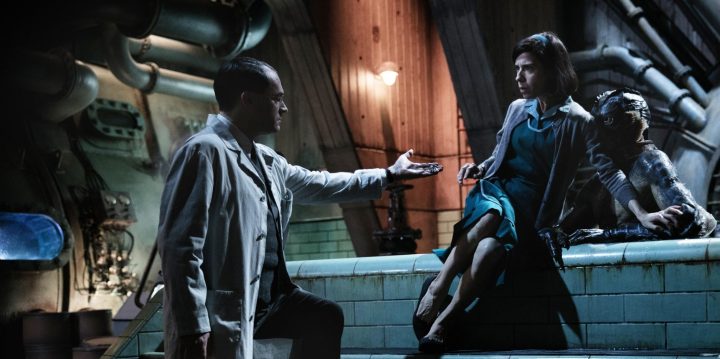
The cast are called upon to deliver some astoundingly creative performances, and without exception they pull it off. Hawkins’ bares everything in the role, as she seduces the creature in the bathtub of her tiny flea-bitten apartment, as well as managing to fill a room to the ceiling with water later in the movie. While she speaks almost not a word throughout, Hawkins’ achieves credible depth to her role though facial expressions and pinpoint body language, not to mention the oft-used sign language her character employs to communicate. Octavia Spencer is an able sidekick in the shenanigans, while Jenkins ain’t no slouch either, offering an effective, warm-spirited portrayal of a man unable to escape his own failings in “modern” America. Michael Stuhlbarg’s red-herring role of Dr Hoffstatler is sweet and sour in alternate scenes (his subplot really doesn’t go anywhere I was interested in, and is the weakest part of an otherwise terrific film) and minor roles to Nick Searcy (as Strickland’s superior) and Stargate franchise actor David Hewlett (as Strickland’s underling) provide reflective surfaces for the inestimable talents of Michael Shannon to work against.
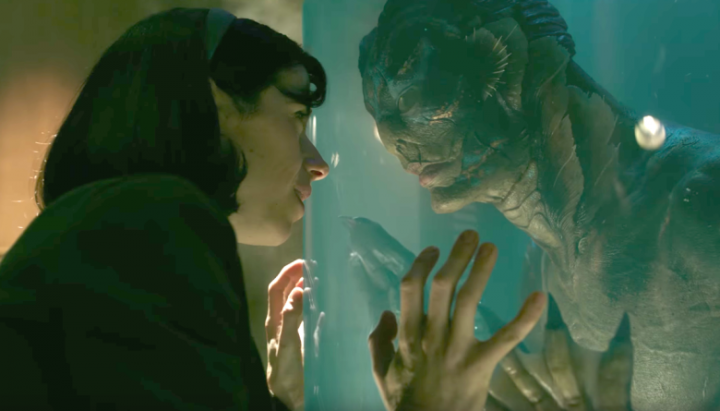
As I mentioned, Michael Shannon’s role of Strickland is where I found much to savour in this movie. A nuanced, subtle character piece, Shannon’s performance ranges from breathtakingly menacing to edging over-the-top melodramatic, the glimmer of hate in his eyes as he endures not only the indignity of failure but the loss of two fingers early in the film. Strickland seems to represent the failing of American uprightness, the flaws in the facade of a perfect society the country had concocted around the 50’s and 60’s, and his arrogance mixed with rage-fuelled impotence at an inability to succeed drives the character’s motivation to finish the job – ie, to kill the creature. Shannon looks to be having a blast here, scouring the film’s darker places with zeal and vein-popping frustration, and to see the man work is a true pleasure.

The Shape Of Water is a joy to watch. It’s funny, violent, thrilling and evocative: the last of those adjectives describes the film overall more fully, what with stunning period production design and some remarkable creature design around del Toro’s muse Doug Jones, who plays the creature with a sweet sense of confused pride. Inventive and intelligent, it never dumbs down for the audience and your response to the more… salacious aspects of the story will define the result for you one way or the other. This is Guillermo del Toro’s strongest all-round story, in my opinion, for it offers a glimpse into a world I want to see more of, a world off the edges of frame that hide dark and shadow but feel somehow safe to peek into (if that makes sense). The film’s allegorical nature will delight, even though the story feels cribbed from subgenre DNA down the generations. Led by great performances and del Toro’s saturated visual style, The Shape Of Water is piece of true cinematic genius and a genuine visual masterpiece.






Del Toro’s comeback? I say that as someone who wasn’t fond of Pacific Rim or Crimson Peak. Love your enthusiasm for this one; I’m eager to catch up with it.
If you didn’t think much of Crimson Peak I can’t help you here, I doubt you’ll find satisfaction with The Shape Of Water. They share too much of del Toro’s horror genetics to be far from each other.
Can’t believe you didn’t like Pacific Rim! The nerve of some people! LOL!!! 😉
I like romantic dramas. This movie promises to be very interesting and I will definitely watch it.
Definitely do so.